When it comes to charging your beloved smartphone, not all chargers are created equal. Many smartphone users take advantage of the convenience and affordability of third-party chargers, yet little do they know about the potential risks that come with this choice. While these chargers may appear to be a wallet-friendly alternative, using non-original chargers can lead to a plethora of issues that can disrupt the functionality and longevity of your device.
Quality and Compatibility Concerns
The quality of the charger you choose plays a vital role in maintaining the overall health of your mobile device. Most original chargers are designed and engineered specifically for the brand and model of the device they are intended to charge. These chargers undergo rigorous testing to ensure they comply with safety standards and provide optimal performance. In contrast, third-party chargers often lack the same level of quality control and may not be compatible with your device, leading to reduced charging efficiency and potential harm to your device's battery.
Risk of Overheating
One of the grave concerns associated with non-original chargers is the risk of overheating. Quality original chargers are equipped with sophisticated internal circuitry that regulates the flow of electricity to your battery, preventing it from becoming overwhelmed by excessive current. In contrast, third-party chargers may not have the same level of protection and can generate excessive heat that can not only damage your battery but also pose a safety hazard. The consequences of a malfunctioning charger can range from reduced battery life to dire situations such as battery swelling, fire, or even explosions.
Compatibility Issues with Third-Party Chargers
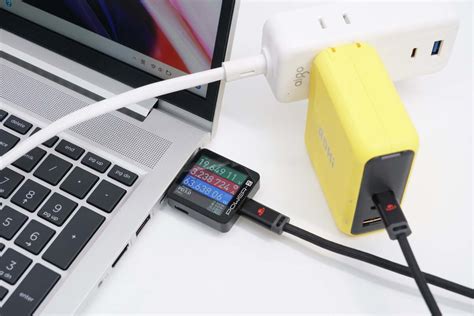
When it comes to charging their devices, many users opt for non-original chargers due to their affordability and availability. However, while non-original chargers may seem like a convenient alternative, compatibility issues can arise, leading to potential problems.
One of the primary concerns with using third-party chargers is the lack of compatibility with the specific device model. Apple designs its chargers to meet the unique requirements of their devices, ensuring optimal charging performance. Non-original chargers, on the other hand, may not be built to the same standards and can result in slower charging speeds or even failure to charge at all.
Another compatibility issue stems from differences in voltage and wattage between original and non-original chargers. Original chargers are engineered to deliver the necessary power to efficiently charge iPhones without causing any harm to the battery. Non-original chargers, however, may not provide the correct voltage or wattage, potentially leading to overcharging, overheating, or even damaging the device.
Furthermore, non-original chargers often lack the necessary safety features found in Apple's chargers. These safety features, such as overcurrent protection and short circuit prevention, are implemented to ensure the well-being of the user and the device. Without these safety measures, there is an increased risk of electrical damage or even personal injury.
It is worth noting that while some non-original chargers may work without any issues, it is difficult to determine their quality or reliability. With counterfeit chargers flooding the market, it becomes crucial to exercise caution and prioritize the safety of your device.
In conclusion, using non-original chargers with your iPhone can lead to compatibility issues, potentially causing slower charging, overheating, battery damage, and safety hazards. To ensure the longevity and safety of your device, it is recommended to use only Apple's original chargers or certified third-party chargers specifically designed for iPhone models.
Insufficient power output from third-party chargers
One possible explanation for the inability of an iPhone to charge when connected to a non-original charger is the insufficient power output from these chargers. In many cases, third-party chargers may not provide the same level of power as the original charger designed specifically for the iPhone, resulting in charging issues.
When using a non-original charger, there is a risk that the power output may not meet the necessary standards required by the iPhone. This can lead to slower charging, intermittent charging, or even the complete inability to charge the device. The power output may not be stable or consistent, causing the iPhone to reject the charging process.
Inadequate power output can be due to various factors, such as inferior quality components used in non-original chargers or the absence of proper quality control measures during production. These chargers may not be able to effectively convert the electrical current to the appropriate voltage and amperage required by the iPhone for efficient charging.
It is also important to note that Apple designs its chargers to be compatible with specific charging protocols and standards. Non-original chargers may not adhere to these standards, resulting in the device not recognizing the charger or refusing to charge to protect the iPhone from potential damage.
| Possible Factors causing insufficient power output: |
|---|
| Poor quality components |
| Inferior manufacturing processes |
| Incompatibility with Apple charging protocols |
| Lack of proper voltage and amperage conversion |
| Inconsistent or unstable power output |
Therefore, it is recommended to use the original charger provided by Apple or certified third-party chargers to ensure sufficient power output and avoid potential charging issues with an iPhone. Investing in a quality charger that meets the necessary standards can help maintain the optimal performance and longevity of the device.
Quality differences between genuine and third-party chargers
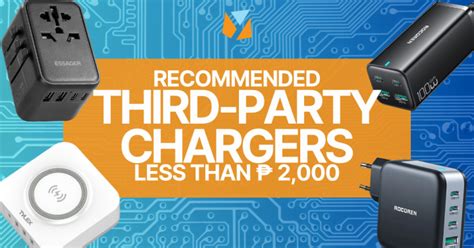
When it comes to choosing a charger for your smartphone, especially if it's not the original one, it's essential to understand the quality differences that exist between genuine and third-party chargers. These differences can significantly impact the charging performance and overall safety of your device.
| Aspect | Genuine Chargers | Third-party Chargers |
|---|---|---|
| Compatibility | Genuine chargers are designed specifically for the respective smartphone models, ensuring perfect compatibility and optimal charging performance. | Third-party chargers may claim to be compatible with various devices, but there can be variations in voltage, current, and connector design that may not deliver the same level of functionality as the genuine charger. |
| Build Quality | Genuine chargers are meticulously manufactured with high-quality materials and undergo strict quality control to meet safety standards, reducing the risk of damage to your device. | Third-party chargers can vary in terms of build quality, and in some cases, cheaper materials may be used, leading to potential hazards such as overheating, short circuits, or even electrical shocks. |
| Charging Speed | Genuine chargers are optimized to provide fast and efficient charging, leveraging technologies like fast charging and intelligent power delivery. | Third-party chargers may not match the same level of charging speed as genuine chargers, resulting in slower charging times or inconsistent power delivery. |
| Warranty and Support | Genuine chargers usually come with a warranty, ensuring that you have the support of the manufacturer in case of any issues or malfunctions. | Third-party chargers may lack warranty coverage or reliable customer support, leaving you with limited options if the charger fails to perform as expected. |
Considering these differences, it's evident that using a genuine charger is the best choice for ensuring the longevity, safety, and optimal charging experience of your smartphone. While third-party chargers may offer a more affordable alternative, it is important to carefully weigh the trade-offs in terms of quality and potential risks associated with their usage.
Lack of Proper Certification in Third-Party Chargers
When considering the reasons behind the inability of an iPhone to charge with a non-original charger, one significant factor to consider is the lack of proper certification in these chargers. Third-party chargers, which are not manufactured by Apple or authorized by the company, may lack the necessary certification to meet the required safety standards and compatibility criteria set by Apple.
The absence of appropriate certification means that these chargers may not undergo the same rigorous testing and quality control processes as the original Apple chargers. As a result, they may not meet the necessary electrical safety requirements, potentially posing a risk to both the device and the user.
Apple places great emphasis on ensuring the safety of its customers and their devices. Original chargers undergo extensive testing and comply with various international safety standards, such as certifications from organizations like Underwriters Laboratories (UL) or the International Electrotechnical Commission (IEC). These certifications indicate that the chargers have met the necessary safety criteria, including insulation, temperature control, and protection against overcharging or short circuits.
Without proper certification, third-party chargers may lack these essential safety features and fail to provide the device with the optimal charging experience.
Furthermore, Apple designs its chargers specifically for its devices, considering factors such as power output, voltage, and current requirements. The non-original chargers may not accurately replicate these specifications, resulting in subpar performance and potentially damaging the iPhone's battery.
Using a non-original charger may void the warranty provided by Apple. The company only guarantees the performance and safety of its own accessories, and any damage caused by third-party chargers may not be covered under warranty.
In conclusion, the lack of proper certification in non-original chargers means that they may lack essential safety features, fail to meet specified requirements, and potentially damage the iPhone's battery. It is crucial to use Apple-certified chargers or reputable, authorized third-party chargers that adhere to the necessary safety standards to ensure the optimal charging experience and safety of the device.
Overheating issues caused by unofficial chargers
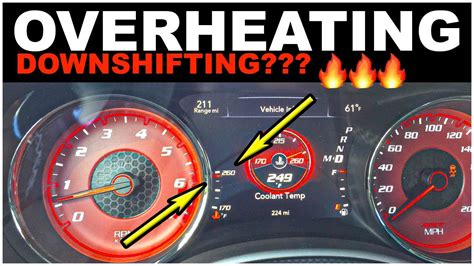
In the realm of charging your mobile device, using non-original chargers can sometimes lead to unforeseen consequences. One of the notable issues that can arise is overheating problems. When non-authentic chargers are used, there is an increased likelihood of overheating, which can have detrimental effects on both the charger and the device being charged.
Unofficial chargers, or chargers that are not specifically designed for a particular device brand, often lack the necessary safety features and specifications that original chargers possess. These safety features are essential for preventing overheating and other potential hazards. When a device is being charged with a non-original charger, there can be a mismatch in voltage and current, resulting in excessive heat generation.
This excessive heat can cause damage to the device's internal components, such as the battery and charging circuitry, making the device vulnerable to performance issues and potential malfunctions. Additionally, the heat generated by the non-original charger can also damage the charger itself, leading to decreased functionality or even complete failure.
Furthermore, it is important to note that non-original chargers are often made with cheaper materials and may not undergo the same rigorous testing and quality control as authentic chargers. This lack of quality control can further contribute to the risk of overheating. Non-original chargers may have inferior insulation, inadequate heat dissipation capabilities, or even faulty wiring, all of which can contribute to overheating problems.
To ensure the safety and proper functioning of your device, it is strongly recommended to use original chargers that are specifically designed for your iPhone or any other electronic device. These chargers have been extensively tested and engineered to provide the appropriate voltage and current, as well as incorporate necessary safety features to prevent overheating and potential damage. While non-original chargers may seem like a more cost-effective option, the risks associated with their use far outweigh any potential savings.
In conclusion, using non-original chargers can lead to overheating problems due to a lack of safety features, mismatches in voltage and current, subpar materials, and inadequate quality control. To avoid these issues and ensure the safety of your device, it is crucial to invest in authentic chargers that are specifically designed for your device.
Malfunctioning charging ports caused by counterfeit chargers
The utilization of non-genuine chargers with iPhones can lead to the malfunctioning of the device's charging port. The usage of unauthorized charging accessories can result in detrimental effects on the overall charging capability of the device, potentially leading to frustrations for users.
Counterfeit chargers often lack the necessary safety features and may not adhere to the standards required for compatibility with iPhones. These chargers may not deliver the appropriate voltage or current to the device, which can overburden the charging circuitry and cause damage to the charging port.
Furthermore, the absence of rigorous quality control in the production of non-original chargers can result in subpar construction and materials. This can lead to physical issues such as loose connections, poor insulation, or even the formation of internal short circuits when used with an iPhone.
Charging ports on iPhones are designed to only accept power from authentic chargers that are specifically engineered for compatibility with Apple devices. The use of counterfeit chargers not only increases the risk of damaging the charging port but also poses potential hazards such as electric shock or overheating due to inadequate safety mechanisms.
To ensure the longevity and safe charging of iPhones, it is highly recommended to utilize only original charger accessories or charging devices that are certified and authorized by Apple. Investing in genuine chargers not only helps maintain the proper functioning of the charging port but also contributes to the overall reliability and durability of the device.
Voltage Inconsistencies in Non-Original Chargers
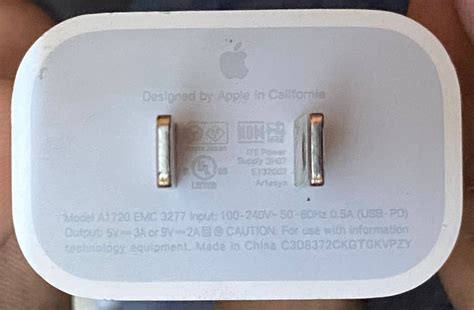
One of the factors that can cause charging issues when using non-original chargers for iPhones is the presence of voltage inconsistencies. These inconsistencies in the electrical output of non-original chargers can create problems in effectively charging the device, leading to slower charging speeds or even complete failure to charge.
Non-original chargers, also known as third-party or aftermarket chargers, may have variations in the voltage they deliver compared to original iPhone chargers. Voltage is a crucial aspect in the charging process as it determines the flow of electrical energy from the charger to the device. When there are voltage inconsistencies, it can negatively impact the charging performance and the overall functionality of the charging system.
| Potential Voltage Inconsistencies | Effects on iPhone Charging |
|---|---|
| Lower voltage than required | - Slower charging speeds - Inability to charge the device properly - Device may not recognize the charger |
| Higher voltage than required | - Increased risk of overheating - Potential damage to the iPhone's internal components - Unexpected shutdowns or malfunctions |
It is important to note that not all non-original chargers have voltage inconsistencies. Some third-party chargers are designed to match the voltage specifications of the original chargers, ensuring a reliable and safe charging experience. However, it is crucial to check the voltage output of the charger before using it with an iPhone to minimize the risk of encountering charging problems.
If you are experiencing charging issues with a non-original charger, voltage inconsistencies may be one of the contributing factors. Switching to an original charger or using a high-quality third-party charger that matches the voltage requirements of the iPhone is recommended to ensure efficient and safe charging.
Potential risk of electrical damage with third-party chargers
When it comes to charging your electronic devices, including smartphones, it is important to ensure that you are using the right equipment. Using a non-original charger, specifically one that is not made by the manufacturer of your device, can pose a potential risk of electrical damage. While these chargers may appear to be cost-effective alternatives, they often lack the necessary safety features and quality control measures found in original chargers.
One of the main concerns associated with using non-original chargers is their compatibility with the specific device they are intended to charge. These chargers may not supply the correct voltage or current levels required by the device, leading to improper charging or even damage to the battery. Additionally, non-original chargers may lack proper insulation and shielding, increasing the risk of electrical short-circuits or overheating.
Another key issue with non-original chargers is their potential to deliver unstable power to the device. Original chargers are designed to provide a consistent and stable power supply, ensuring safe and efficient charging. Non-original chargers, on the other hand, may deliver fluctuating power levels, which can result in voltage spikes or drops. These power fluctuations can damage the sensitive components of the device and pose a safety hazard.
Inferior build quality is another factor that contributes to the risks associated with using non-original chargers. Original chargers go through rigorous testing and quality control processes to meet safety standards. Non-original chargers, however, may not undergo the same level of testing, making them more susceptible to defects or malfunctions. Such defects can increase the likelihood of electrical damage, including short-circuits or electrical fires.
| Key concerns with non-original chargers: |
|---|
| - Incompatibility with device specifications |
| - Insufficient insulation and shielding |
| - Delivery of unstable power |
| - Inferior build quality |
To ensure the safety and optimal performance of your device, it is recommended to use original chargers or chargers that are certified by the manufacturer. Investing in a high-quality charger may seem more expensive initially, but it can save you from potential electrical damage and the cost of repairing or replacing your device in the long run.
Safety concerns related to third-party chargers
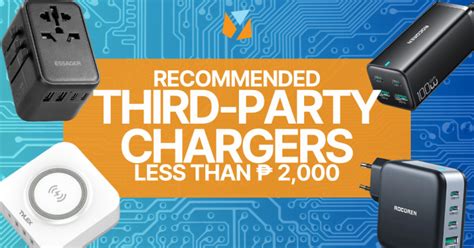
In the realm of charging electronic devices, safety is of paramount importance. When it comes to utilizing chargers that are not the original ones specifically designed for a particular device, there exist a variety of potential risks and hazards. It is crucial to understand the safety concerns associated with using non-original chargers.
Quality and compatibility: Non-original chargers may vary in terms of their quality and compatibility with the device they are intended to charge. These chargers may not meet the necessary quality standards and may lack the necessary protection mechanisms to ensure safe and efficient charging. Compatibility issues can arise, leading to potential damage to the device or a decreased charging performance.
Electrical safety: Original chargers are engineered to meet strict safety regulations, ensuring protection against electrical hazards such as short circuits, overcharging, and overheating. Non-original chargers may not undergo the same rigorous testing and quality control, increasing the risk of electrical problems. This can lead to device malfunctions, battery damage, or even electrical fires.
Unauthorized modifications: Non-original chargers may undergo unauthorized modifications or use counterfeit components to reduce manufacturing costs. These modifications can compromise the charger's overall safety and reliability. The use of inferior or counterfeit parts may increase the risk of electrical hazards, including short circuits or voltage fluctuations.
Lack of warranty and support: Manufacturers of original chargers typically provide a warranty and product support to ensure customer satisfaction and address any potential issues. With non-original chargers, there is no guarantee of such support. In case of any malfunction or damage caused by a non-original charger, there may be limited or no recourse for assistance or compensation.
Counterfeit products: The market is flooded with counterfeit versions of popular chargers, imitating the design and branding of original products. These counterfeit chargers may not only pose safety risks but also contribute to intellectual property violations and loss of revenue for the original manufacturers.
Given the potential safety hazards and lack of guarantee associated with non-original chargers, it is advisable to prioritize the use of original chargers or certified third-party alternatives that meet the necessary safety standards. Investing in a reliable and verified charger is crucial for the long-term safety and optimal performance of electronic devices.
Voiding warranty by using third-party chargers
Using a charger that is not the original one provided by the manufacturer can lead to the nullification of the warranty that comes with your iPhone. This section will explore the potential consequences of using non-original chargers and the importance of adhering to the manufacturer's recommendations.
Potential Risks:
When you opt to charge your iPhone with a charger other than the one provided by Apple, you may encounter various issues that could potentially damage your device or its internal components. These risks include:
- Overheating: Using a non-original charger may result in improper voltage regulation, leading to excessive heat generation during charging. This can cause damage to the battery or even the entire device.
- Incompatibility: Third-party chargers may not be designed specifically for your iPhone model, resulting in compatibility issues that can disrupt the charging process or prevent it altogether.
- Instability: Non-original chargers may not provide a stable flow of electricity required for optimal charging. This instability can lead to inconsistent charging speeds and even damage to the device's charging port.
Warranty Implications:
Apple clearly states in their warranty terms and conditions that the use of non-original chargers may void the warranty of your iPhone. By using chargers from unverified sources, you risk losing the manufacturer's coverage for any potential issues that may arise with your device.
It is important to note that Apple's warranty only covers defects in materials or workmanship, and using unauthorized chargers can be seen as user negligence, which is not covered.
Protecting Your Warranty:
To avoid the potential risks and warranty complications associated with non-original chargers, it is strongly recommended to only use chargers provided by Apple or those certified by the company. These chargers have undergone extensive testing to ensure they meet the necessary standards for the safe and efficient charging of your iPhone.
By adhering to Apple's recommendations, you can not only protect your device from potential damage but also ensure that your warranty remains intact, providing you with peace of mind and reliable support should any issues arise with your iPhone.
iPhone 12 not charging. Solution on how to fix.
iPhone 12 not charging. Solution on how to fix. by infohut 199,429 views 2 years ago 3 minutes, 16 seconds
iPhone Won't Turn On After Charging For Long Time? The Fix!
iPhone Won't Turn On After Charging For Long Time? The Fix! by Payette Forward 560,872 views 1 year ago 7 minutes, 36 seconds
FAQ
Why won't my iPhone charge with a non-original charger?
There are several reasons why your iPhone may not charge with a non-original charger. One possible reason is that the charger you are using may not have the proper voltage or current output required for your iPhone. This can prevent the charging process from initiating or completing. Additionally, non-original chargers may not have the necessary MFi (Made for iPhone) certification, which means they may not meet Apple's quality and safety standards. Your iPhone may also display a warning message or refuse to charge altogether as a safety measure to protect your device.
What happens if I use a non-original charger to charge my iPhone?
Using a non-original charger to charge your iPhone can have several consequences. Firstly, the charging process may be slower or less efficient, as the charger may not provide the necessary power output. This means that your iPhone may take a longer time to charge or may not charge at all. Secondly, non-original chargers may not be built to the same quality and safety standards as genuine Apple chargers, which could potentially pose a risk to your device. Lastly, your iPhone may display a warning message or refuse to charge as a safety measure to prevent any potential damage.
Can using a non-original charger damage my iPhone?
Using a non-original charger has the potential to damage your iPhone. Non-original chargers may not meet the necessary safety and quality standards set by Apple. These chargers may not have the proper voltage or current output, which can lead to issues such as overheating, short-circuiting, or battery damage. Additionally, using a non-original charger can void your iPhone's warranty, leaving you responsible for any repairs or replacements that may be needed as a result of using the charger.
How can I ensure that my iPhone charges properly with a non-original charger?
To ensure that your iPhone charges properly with a non-original charger, there are a few steps you can take. Firstly, make sure that the charger you are using has the necessary MFi (Made for iPhone) certification. This indicates that the charger meets Apple's quality and safety standards. Secondly, check the voltage and current output of the charger to ensure that it matches the requirements of your iPhone. Lastly, monitor the charging process closely. If you notice any unusual behavior such as excessive heating, slow charging, or your iPhone displaying warning messages, it is advisable to immediately stop using the charger to prevent any potential damage to your device.




